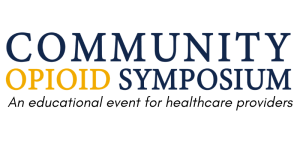Woman’s Foundation’s Online CME Program offers free, on-demand access to a library of courses eligible for a maximum of 1.00 AMA PRA Category 1 Credits™ for each course. Courses include recordings from our live conferences and symposiums, as well as studio-produced courses featuring local and national experts. Our service enables Woman’s Foundation Online CME Program to become a virtual visitor to the homes and offices of physicians and allied health professionals, helping make the pursuit of lifelong learning convenient for learners in Louisiana and surrounding states.
Receive Online CME's from a Local Provider

Topics & Learning Objectives
To complete an online educational event, please complete the following steps:
- Click the topic you are interested in.
- Click the blue “BEGIN” button to enroll in the online educational event.
- Once you are prompted to the High Marks page, complete the pre-test.
- Click on Video/Documents to watch the corresponding presentation, this will bring you to a separate page.
- Return to the enduring material page and complete the post-test.
- Complete the session evaluation.
- On the top blue banner banner, click on “Claim CME Credits”, from this page you will be able to download a PDF of your CME certificate.
2023 Virtual Community Opioid Series
Accredited for Physicians, LPCs and Social Workers with select sessions accredited for Nurses
Learning Objectives:
1. Recognize the urgent need for barrier-free models of buprenorphine access
2. Explain the key elements of a novel collaborative model of pharmacy-based buprenorphine induction
3. Describe the characteristics of the participants in the model
4. Educate healthcare provides to reduce the stigma, discrimination, financial barriers, and other social/structural determinants of health
Learning Objectives:
- Identify patients to whom naloxone should be recommended and confidently recommend it without the concern that it will encourage more opioid abuse/abuse
- Communicate the need for naloxone to patients more effectively while considering potential roles of stigma
- Achieve more success in getting patients to accept naloxone recommendations/offers
Learning Objectives:
- Provide help to those served by identifying and addressing needs other than substance use.
- Raise awareness for avenues of assistance for those struggling with substance abuse.
- Identify the communication breakdown between healthcare industry and community service organizations





